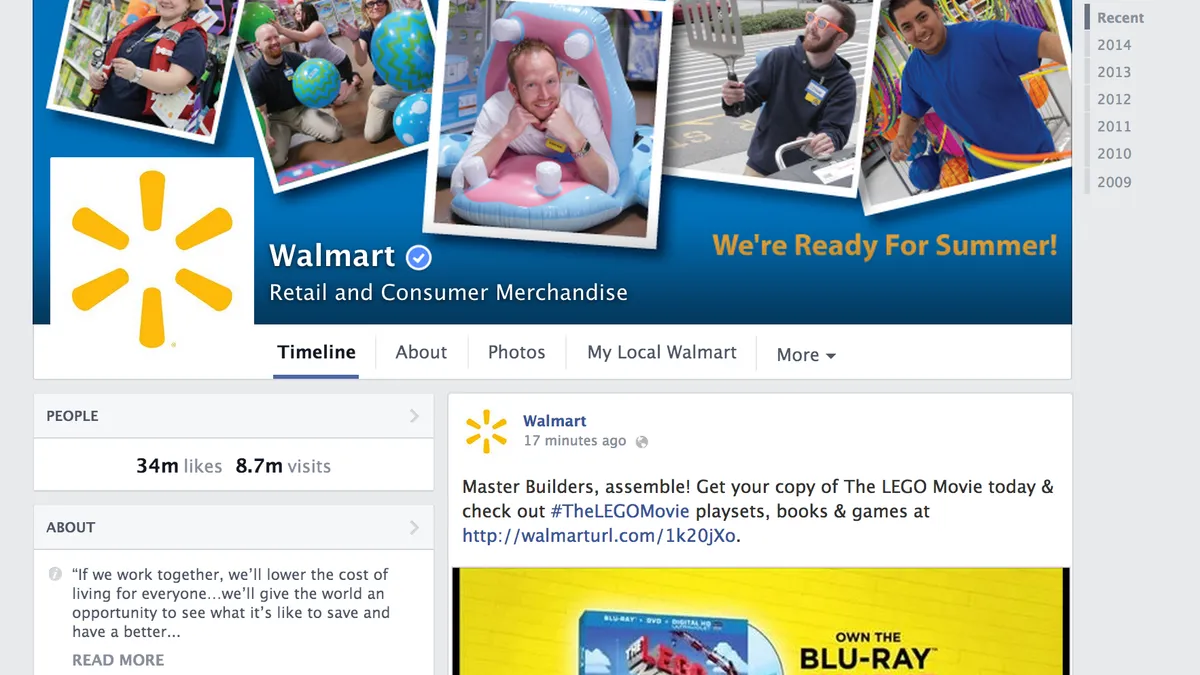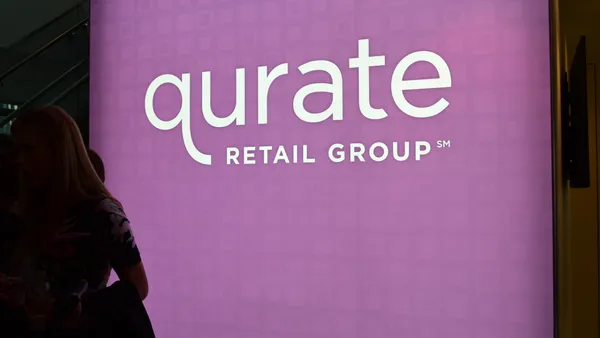Dive Brief:
-
Wal-Mart Stores Inc. has announced improvements to its loyalty program that seem to be aimed at boosting online sales.
-
Walmart Credit Card and Walmart MoneyCard (pre-paid cards) holders as of Friday can earn 3% back on purchases made on Walmart.com, including ship to store orders, 2% back on fuel purchases made at Wal-Mart or Murphy USA gas stations; and 1% back on purchases made at Wal-Mart stores and other places the Walmart Credit Card or Walmart MasterCard are accepted.
-
Existing Walmart Credit Card and Walmart MasterCard cardholders are automatically enrolled in the new structure, new customers can apply in-store or at Walmart.com.
Dive Insight:
Wal-Mart’s new loyalty program featuring its credit cards pales in comparison to the new card that Costco is unveiling for its members next month, which sources said is good enough to potentially boost its membership and bring it to the top of shoppers’ wallets for use anywhere.
Still, this new loyalty program for Wal-Mart credit card holders is clearly aimed at increasing the retailer’s e-commerce sales, which has been an elusive goal for the retail giant.
In Q4, which included the holiday season, Wal-Mart reported just an 8% growth in online sales. It’s not quite copacetic to compare Wal-Mart—the largest retailer not just in the U.S. but in the world—to rivals Amazon or Target, which pale in comparison by several measures, but Amazon saw Q4 growth of 22% and Target boosted its online sales by 34% in the same period, helped by its holiday-time free shipping policy. Wal-Mart, by contrast, kept its $50 minimum order requirement in place.
“Wal-Mart's e-commerce business is among the more complex in the world, and it's still a tiny fraction of their vastly complex brick-and-mortar business,” Keith Anderson, VP of strategy and insight at e-commerce analytics firm Profitero, told Retail Dive in an email earlier this year. “They sell food and non-food; run an online marketplace and a traditional e-commerce business; offer delivery and click-and-collect; and they attempt to operate across four continents with enough freedom to be locally relevant and enough standardization to be centrally manageable.”
Some of the decisions it faces are definite either/or considerations that force the organization to possibly forsake its roots—and the roots of its success—as a low-price leader in brick-and-mortar retail.
But Nick Egelanian, president of retail development consultants SiteWorks International, told Retail Dive that it would be a mistake for Wal-Mart to move too far from its brick-and-mortar stronghold for the sake of e-commerce growth. Especially, Egelanian says, when you consider that even after two decades of market disruption from Amazon (a company that he says is not quite profitable in its own retail endeavors), e-commerce remains at most about 8% of all retail industry sales.














